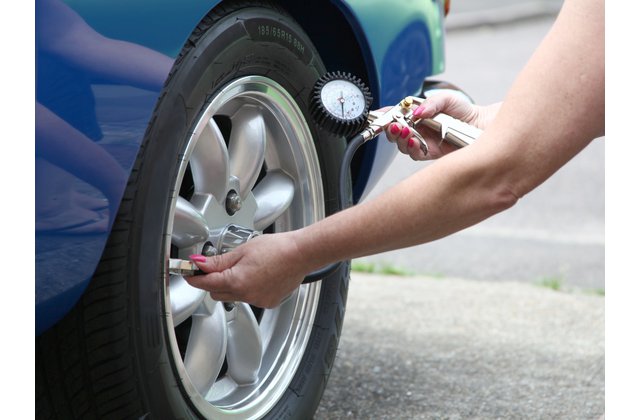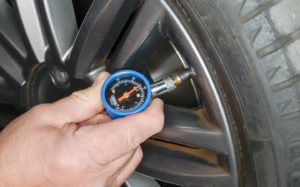Few things frustrate a motorist more than having to pull off the highway to fix a flat tire, but that soon may become a distant memory thanks to new technology tire manufacturers are developing.
“Run-flat” tires already have become commonplace. If a tire suffers all but the most catastrophic failure, it allows a driver to keep going — typically up to 50 miles — thanks to super-stiff sidewalls.
German tiremaker Continental has an alternative: tires that can seal themselves after a nail punctures the tread, a goopy fluid flowing around the leak to seal it off. A motorist might not even notice there’s a problem initially, though the company says a more thorough repair eventually will be needed.
Other brands launching self-sealing tires include Hankook, Pirelli and Michelin, the French company’s Primacy model debuting as a factory option on the 2020 Ford Explorer.
Airless tires
Ever since John Boyd Dunlop developed the first practical pneumatic tire in 1887, tire manufacturers have looked for ways to prevent flats and blowouts. Michelin recently revealed a prototype, dubbed Uptis, that doesn’t need to be inflated at all. It is being tested as part of a joint program with General Motors, the partners hoping to launch production by 2024.
Several other manufacturers, including Japan’s largest tire maker Bridgestone, are testing their own airless designs.
But that’s just the beginning of the dramatic changes that soon could reshape — quite literally — your car’s tires in ways aimed at yielding improved safety, performance, fuel economy, comfort, durability and the industry’s environmental impact. That includes tires that can “talk,” issuing an alert when they sense black ice, for example, or even change their shape, to improve traction.
3D printed tires
And you may soon be able to have the treads on your tires replaced; 3D printers can customize replacements for winter, summer or even track use.
“Long-term, our researchers will have to turn upside-down everything we know,” Michelin CEO Florent Menegaux said during a June interview in Montreal at the company’s Movin’On Summit, an annual conference exploring future transportation trends.
One of the most critical challenges is the search for alternatives to the natural rubber that has been used ever since Charles Goodyear discovered vulcanization, a process that makes it stable, in 1844.
That’s no small matter. For one thing, “The problem is that the industry is growing so rapidly, building (over 80) million cars a year now, that keeping up is a problem,” said Michael Martini, a chemist and industry veteran who recently retired as president of original equipment consumer operations at Bridgestone Americas.
Replacing rubber
It takes seven years before a rubber plant produces the raw material, known as either India Rubber or caoutchouc, can be tapped.
But there’s also the problem of recycling. Each year, according to industry data, about 200 million tires are discarded worldwide. While some are repurposed, the process is difficult and costly, so most are sent to dumps and landfills, often piled up and serving as breeding grounds for mosquitoes and other insects, occasionally catching fire and creating toxic plumes of smoke.
Menegaux said Michelin has set a goal of replacing 80% of the rubber it uses with other, more eco-friendly materials. And it isn’t alone. Ironically, what many folks see as an ecological nuisance may provide the environmentally friendly alternative.
Dandelions
“Most people view dandelions as a nuisance,” said a statement from Continental, but researchers at the German company “embrace the flowering weed as a key component to the future of tires.”
Continental is working on a replacement for rubber known as taraxagum that it says could be in production in five to 10 years. The material can come from as many as 1,200 types of plants, though researchers are leaning toward the Russian dandelion that takes less than a year to grow.
Safety is key, and slow air leaks and underinflated tires can be deadly, something linked to the Ford Explorer rollover problem two decades ago resulting in an estimated 280 deaths. One in 5 tires undergoes a significant loss of air pressure each year, said Steve Kiefer, General Motors’ purchasing director.
Federal regulators already require monitoring systems that alert a motorist when a tire loses pressure. But the next step will allow tires to signal when they run into potholes, broken pavement, gravel, snow or black ice. That would allow a human driver to respond, say, by slowing down or braking more cautiously, and would prove particularly helpful, said Michelin R&D chief Eric Vinesse, with fully autonomous vehicles that could automatically adjust driving behavior.
Magnetic levitation
An even more radical concept, the Goodyear Eagle 360 Urban, is as round as a beach ball and connected to the car using “magnetic levitation, which suspends the tire from the car by magnetic fields,” according to the company. It also uses artificial intelligence “to sense, decide, transform and interact.”
“Made of super-elastic polymer, the tire’s bionic skin has a flexibility similar to that of human skin,” Goodyear said, “allowing it to expand and contract … like human muscles, re-shape the individual sections of the tire’s tread design, adding ‘dimples’ for wet conditions or smoothing the tread for dry conditions.”
Whether exotic concepts like the Michelin Uptis or Goodyear Eagle 360 Urban ever make it into production is unclear, but there are plenty of other ways to improve tire performance.
Quiet tires
Bridgestone’s Blizzak uses a combination of microscopic-sized gaps and studs to markedly improve handling and braking on ice. The Japanese company’s recently launched QuietTrack tire mixes new rubber compounds with a special tread design to sharply reduce road noise. That’s something most motorists might not notice over the roar of an internal combustion engine, but tire noise becomes a major irritant in an otherwise quiet electric vehicle.
Today’s drivers are likely to notice other changes. Full-size spare tires are now a rarity and even mini-spares are disappearing, many automakers opting for kits that can be used to fill the tire with a foam temporarily sealing all but the most catastrophic failures.
Wheels are also changing, as a few carmakers’ turn from steel to lighter aluminum, and even super-strong carbon fiber rims.


